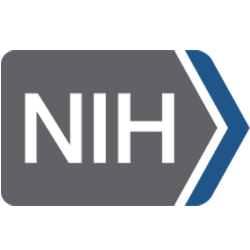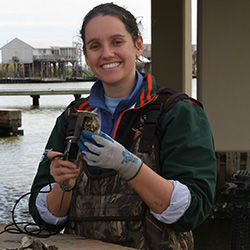
SARAH BODENSTEIN
SCHOOL OF RENEWABLE NATURAL RESOURCES
NOAA Sea Grant
Project Summary
Oyster are an important part of the culture and the economy of Louisiana, however, recently high oyster mortality has threatened the livelihood of oyster farmers and impacted wild oyster populations (Casas et al., 2018). To preserve the tradition of oyster farming and wild oyster reefs, the genetic resources of farmed and wild oysters must be protected. Germplasm repositories provide a way to preserve these genetic resources. A germplasm repository is a collection of cryopreserved (frozen) genetic material, such as sperm, stored alongside associated information (phenotypic, physiological, genetic, etc.) (Torres et al., 2016). By storing genetic material from aquaculture species in a repository the genetic resources of that species are safeguarded from potential threats, such as high mortality caused by disease, low salinity, or natural disasters. Additionally, any information associated with repository samples is stored in the repository database. This ensures that data and samples cannot be separated and gives the samples their true value. Repository samples not only protect current genetic resources but also facilitate selective breeding programs to create genetic lines that are resilient to challenges oysters in Louisiana face, such as low salinity.
Despite the advantages of using a repository and the successful cryopreservation protocols developed for oysters, a commercial-scale repository system capable of serving the oyster industry does not yet exist. One reason for this is that laboratory techniques for cryopreservation are not translated into a process capable of meeting the needs of a commercial industry (Hu et al., 2015). Additionally, cryopreserving samples alone is not enough to build a comprehensive repository. Data about those samples must also be collected and stored, and logistical concerns, such as required equipment, personnel, and resources, must also be taken into account. This work addresses the challenges of repository development by using industrial engineering models to simulate and outline how to integrate a repository into the current landscape of oyster aquaculture. These models are divided into three levels (protocol, center, and community) to reflect the different levels that repositories operate in. The goal of this work is to provide novel pathways for oyster repository development at multiple levels, and to present a generalized blueprint that is customizable for other commercial aquaculture species.
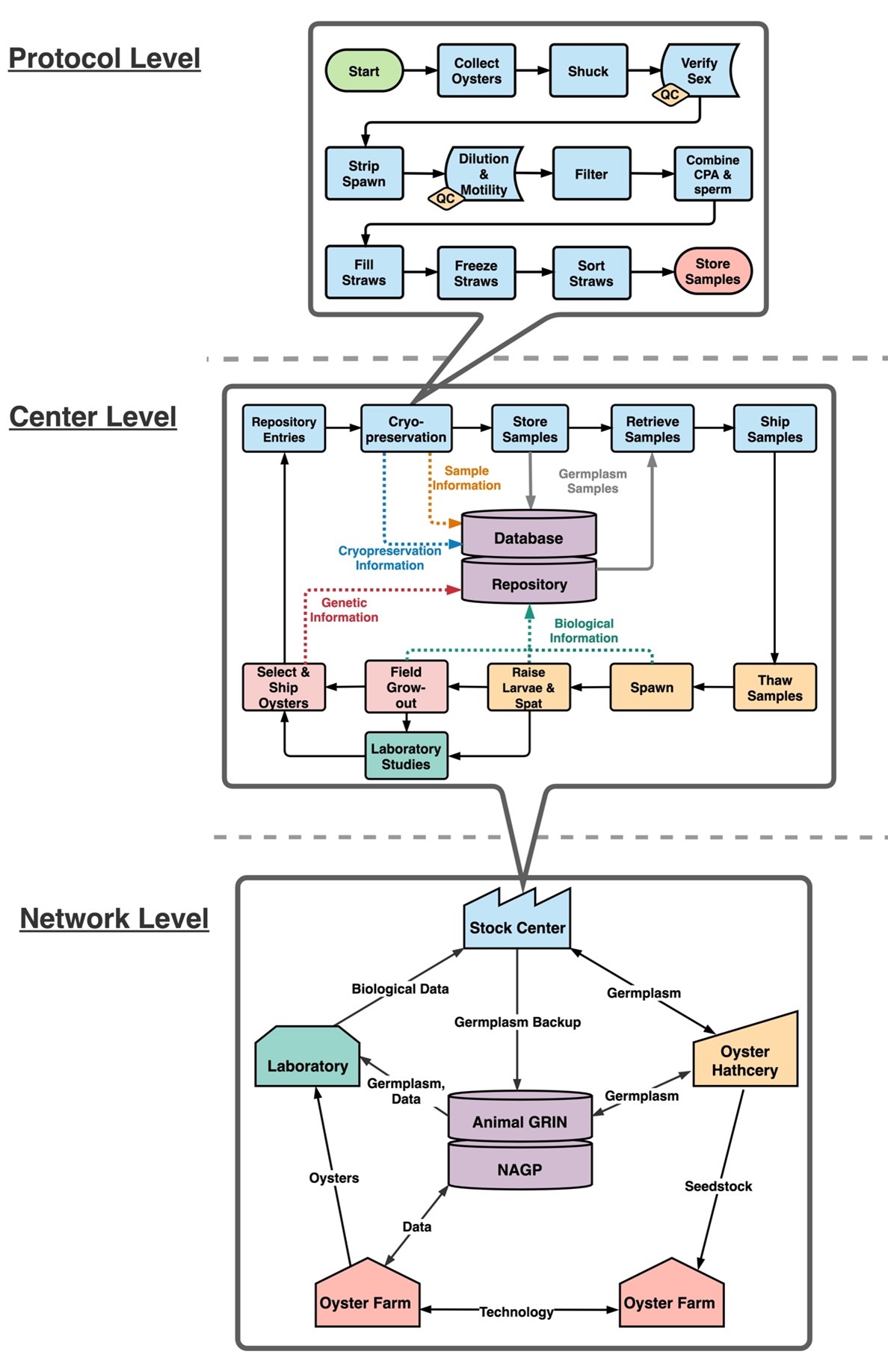
PROTOCOL LEVEL
The protocol level encompasses the methods used to cryopreserve samples and all associated quality management aspects. At this level, a simulation model of a scalable, high-throughput cryopreservation protocol was developed to standardize the process and evaluate the required resources at different scales of production. More details about this project can be found here.
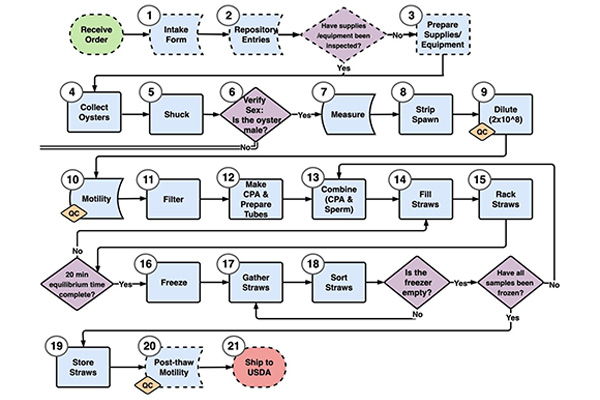
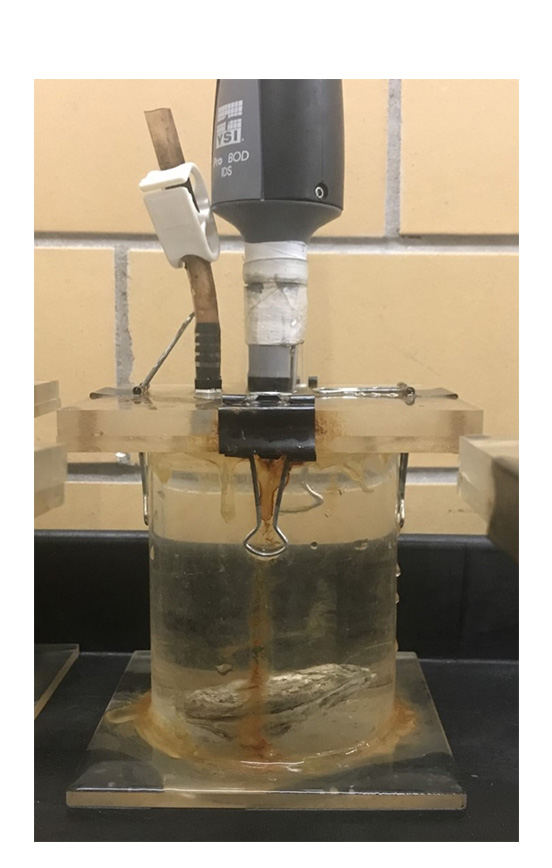
CENTER LEVEL
The center level addresses the activities of the repository facility that preserves and stores samples and associated information. This level also includes community activities that immediately affect the repository, such as submitting and withdrawing samples and data. At this level, process flow diagrams and partial budgets are being created to assist in the integration of repositories into existing oyster aquaculture systems. These center-level process flow diagrams outline how samples and data can move into and out of the repository. To begin building an oyster repository, native Louisiana broodstock were collected and bred to create specific crosses meant to have varying salinity tolerances (Leonhardt et al., 2017). These crosses were used for field and laboratory studies to assess the effect of low-salinity conditions on growth, mortality, and physiological parameters such as respiration rate. Sperm from the broodstock and the crosses were cryopreserved and shipped to the USDA’s National Animal Germplasm Program (NAGP) for long-term storage. Additionally, the data collected from the field and laboratory studies were stored in NAGP’s online database, Animal GRIN.
NETWORK LEVEL
The network level includes the activities of all community members that interact with the repository, either directly or indirectly. Community members can include: research laboratories, oyster hatcheries, oyster farms, seafood distributers, other repositories, and backup entities such as the USDA NAGP. At the network level, the framework of the network and the needs of the community members within that network are identified and outlined. The goal at the network level is to build an overall model for the repository that addresses the needs of the current oyster community and the future repository network. To identify the needs of oyster industry professionals, interviews are being conducted where challenges of the industry are identified and possible models of repository operation are discussed.
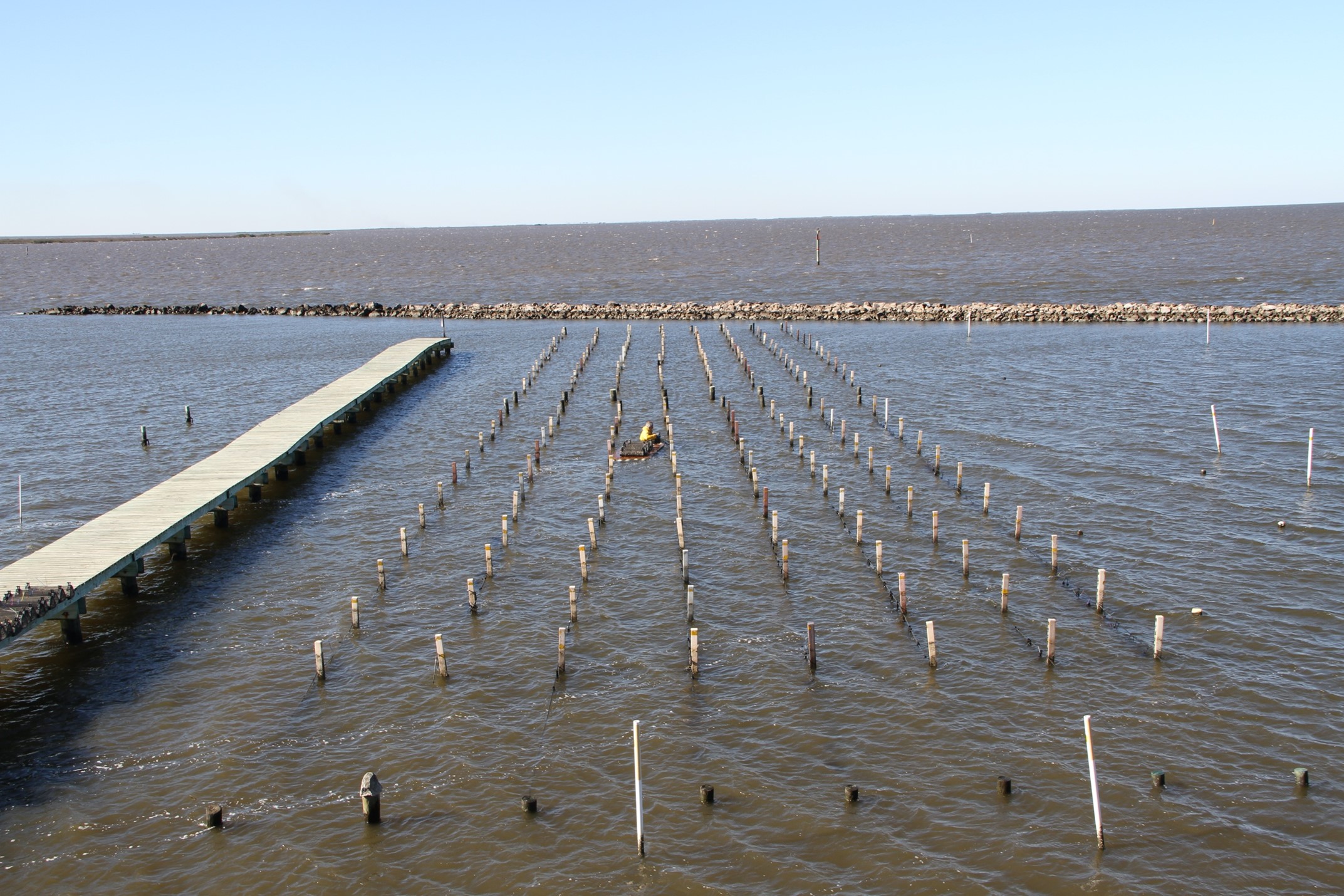
Team Members
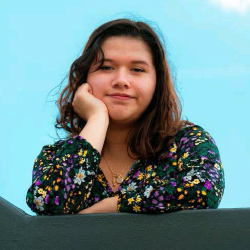
Genesis Mize - Undergraduate Student Worker

Michael Constans - Undergraduate Student Worker
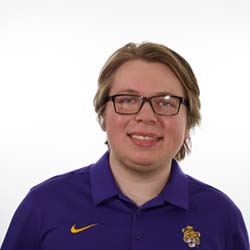
Kevin Cagnolatti - Undergraduate Student Worker
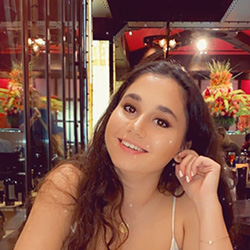
Fidan Y Abdullayeva - Undergraduate Student Worker
Collaborators
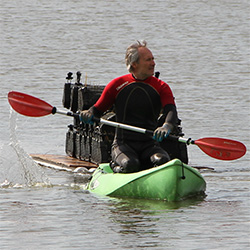
Dr. Jerome F. LaPeyre - School of Animal Sciences, LSU
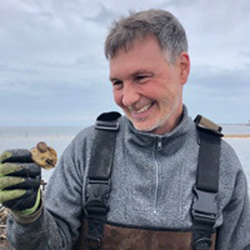
Dr. William C. Walton - School of Marine Science,Virginia Institute of Marine Science
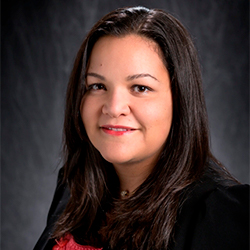
Dr. Isabelina Nahmens - School of Mechanical and Industrial Engineering, LSU

Dr. Brian R. Callam - School of Renewable Natural Resources, LSU
Funding Organizations
